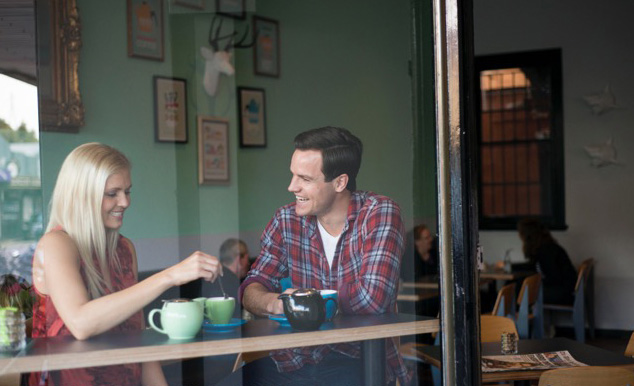One of my personal bugbears in content production is stock photos. They have a bad reputation, often associated with being bland, clinical and fake. Of course they have their benefits; we occasionally use them but almost always as a last resort. One photographer has taken the concept of stock photography and turned it on its head by photoshopping himself into the background.
Reasons for stock photos:
If you must use stock photos, here are a few benefits to using them in corporate content.
• You’re a sole trader who does not wish to be the ‘face’ of your company or the subject of every photo.
• You have low budget or an impossibly tight deadline.
• Your company has not officially opened for business, so you have no customers or office space to feature in photos.
Stock photos are often used as an addition to real images. This is fine as a means to complement and emphasise the content’s key messaging, but I still don’t like them. Think about a typical stock photo: a group of employees sitting together, enthusiastically giving the thumbs up sign. This may symbolise a happy working environment, but wouldn’t you rather see real people genuinely having fun at work? It’s like choosing between seeing a big fish in an aquarium or experiencing them in their natural environment by scuba diving in the ocean.
Reasons to avoid stock photos in your content:
- They look fake and unbelievable
- They lack emotion
- They often look bland and clinical
- The images may symbolise company values and work ethic, but it’s still not a true representation of your organisation
- Other companies may have used the same images
You get what you pay for
Perth photographer Paul Pichugin wrote about how stock photography can work against your brand in CCO magazine. How can an image represent your company when it also represents other companies who purchased the same image?
As Paul said: “…the image is being used to represent everything from greeting cards to cosmetic surgery and Viagra.”
Whenever you can, be authentic and use real imagery. Ideally, hire a professional photographer, who is trained to draw out the best in people on camera.
How do professionals get the best shots?
- Knowing the objective of the shoot and how to effectively portray the key messages through imagery
- Capturing people in action at work
- Positioning the talent in a pose natural to their character and environment
- Coaching and encouraging the talent to relax and have fun with the shoot, helping them to come across as genuine and real
- Using a professionally lit studio or lighting the workspace effectively to capture the talent in the best light possible
Reality is always better
Sometimes stock photos must be used, but whenever possible you should always use real people, in real situations. Also always use a professional photographer who understands the meaning you are trying to convey through the images.
Build your assets
Like footage, images are assets used to market your business. It’s worthwhile building a library for them. Photographs archived from the year before may well be used in future content productions. Recycle your photography assets as much as possible to maximise their value. If budget is an issue, why not hire a photographer for a few hours and capture a whole library of images for your business? It’s more cost-effective to get multiple images in one shoot; you could cover multiple areas from staff, to premises to products.
Choose your filter
Another option to creating low-budget but professional photography is to add a filter. Take a stock image portraying the message you want and add a filter. This could be a layer of colour over the image, like your brand colour. Not only does this maximise brand identity, it ties the photo to your brand. In addition, you can add your own information and modify the image to make it your own. This may involve embedding your logo in the image or changing the background to make it more localised (e.g., adding a Perth cityscape or changing the colour of a work uniform to match your brand colours.) There are plenty of accessible photo editing software available that are suitable for the amateur editor. Feel free to contact us or our very talented photographer, Julian Masters. We’re happy to discuss various options with you for creating your own photography portfolio.
Photography Credit - Jules corp photography at Lush Digital









Submit a CommentPlease be polite. We appreciate that.